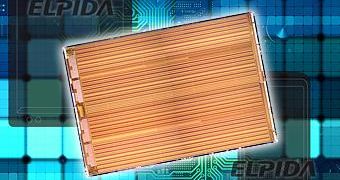Consolidating our belief that the NAND and DRAM markets are exchanging roles, a recent financial report from DRAMeXchange shows that the random access memory market actually exhibited a double digit growth in the second quarter of 2012.
The reason we say that NAND and DRAM have switched roles is because, over the past two years, the former has been holding its own just fine in terms of supply-demand ratio, while DRAM has been on a fairly constant drop.
The situation has now been reversed, to some extent. Due to weak demand of USB flash drives and memory cards, even amid improving interest in SSDs, NAND chips have been dropping in sales and in price enough to force Samsung and SK Hynix to cut production.
DRAM, on the other hand, has truly rebounded, with revenues reaching $7.02 billion in the April-June period (5.67 billion Euro).
That sum is 12% higher than the one recorded in the previous three-month period ($6.27 billion / 5.06 billion Euro).
Ironically, this turn of events is owed to a tactic that backfired a couple of years ago: manufacturing process advancement.
Back in 2010, and even in 2011, random access memory chip suppliers ended up causing the long-lasting oversupply by pushing forward new and better batches of chips too quickly, causing older-generation inventories to accumulate.
That said, it remains to be seen if this new rebound lasts or if history just ends up repeating itself. At any rate, the company with the greatest share was, unsurprisingly, Samsung, with almost 40%. Second place went to SK Hynix (24.4%) and third to Elpida, (12.9%).
Finally, Micron, ended up on the fourth spot with a 12.5% share, quite bizarre considering that it has bought Elpida (and Rexchip for that matter) after Elpida suffered a sharp financial instability during the period herein discussed and the months leading up to it.

 14 DAY TRIAL //
14 DAY TRIAL //